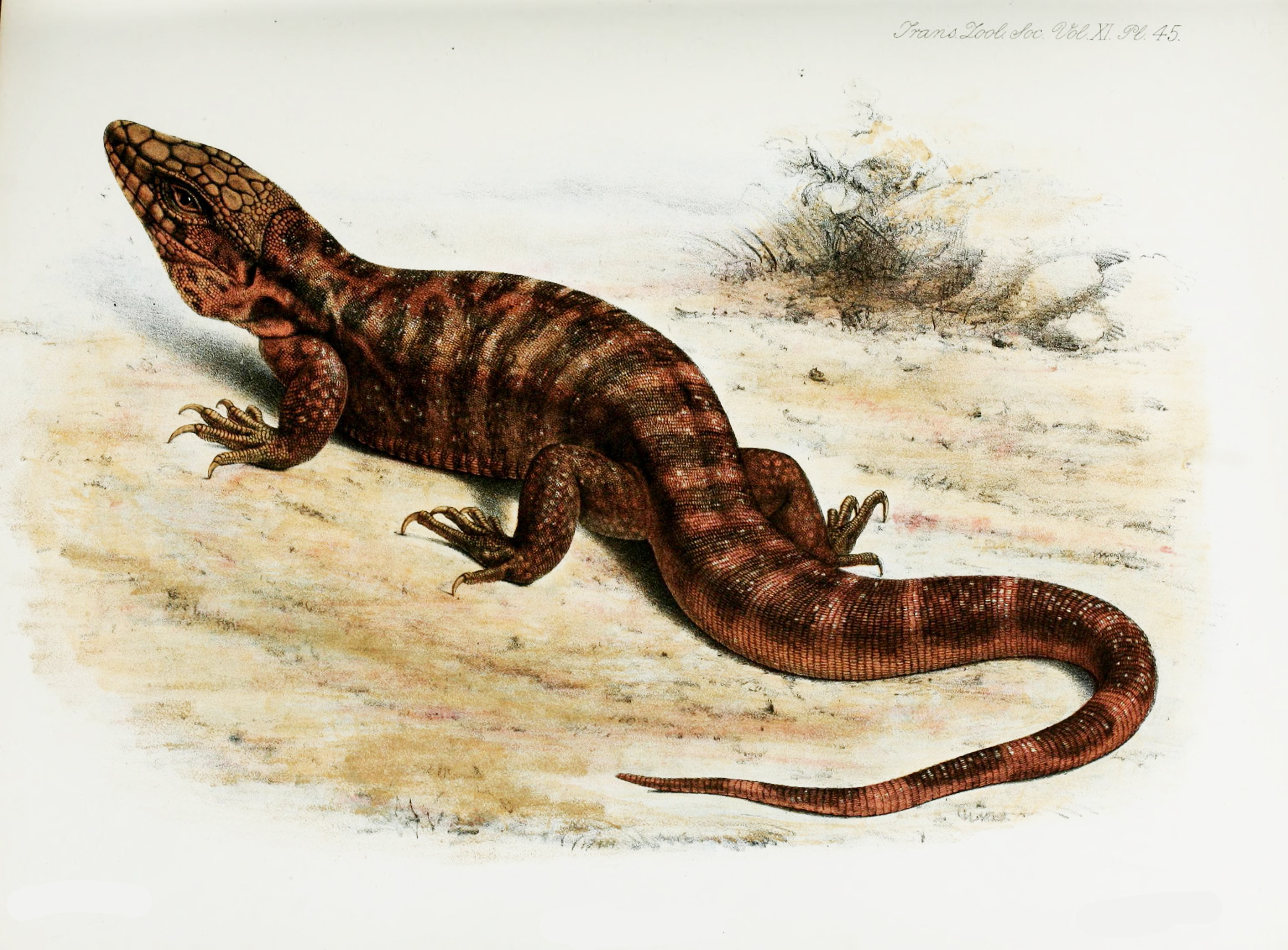Salvator Rufescens on:
[Wikipedia]
[Google]
[Amazon]
The red tegu (''Salvator rufescens'') is a lizard native to western
 As hatchlings, most red tegus display little, if any, red coloration. They are typically brownish-green with black strips across their width and several broken white stripes down their length. They develop red coloration as they mature; males are usually brighter than females.Bartlett, R., & Bartlett, P. (1996)
As hatchlings, most red tegus display little, if any, red coloration. They are typically brownish-green with black strips across their width and several broken white stripes down their length. They develop red coloration as they mature; males are usually brighter than females.Bartlett, R., & Bartlett, P. (1996)
Monitors, Tegus, and Related Lizards
Barron’s Educational Series.Pianka, E. R. (2006)
Lizards: Windows to the Evolution of Diversity
University of California Press. Adult females can reach 91 cm (just under 3 ft) in length. Males are significantly larger, reaching up to 140 cm (4.5 ft) and developing large jowls.
Argentina
Argentina (), officially the Argentine Republic ( es, link=no, República Argentina), is a country in the southern half of South America. Argentina covers an area of , making it the second-largest country in South America after Brazil, th ...
, Bolivia and Paraguay
Paraguay (; ), officially the Republic of Paraguay ( es, República del Paraguay, links=no; gn, Tavakuairetã Paraguái, links=si), is a landlocked country in South America. It is bordered by Argentina to the south and southwest, Brazil to th ...
. It is sold in the pet trade around the world because of its relatively docile nature and because it is comparatively easy to keep.
Habits and habitat
In the wild, red tegus are diurnal and terrestrial. Living in a temperate climate in Argentina, they brumate in the winter, burying themselves and remaining largely dormant during the coldest periods, in some areas for up to seven months. They also burrow as a matter of habit at other times of year. In theecotone
An ecotone is a transition area between two biological communities, where two communities meet and integrate. It may be narrow or wide, and it may be local (the zone between a field and forest) or regional (the transition between forest and gras ...
between the arid Chaco and the Espinal of central Argentina they are known to naturally hybridise with the Argentine black and white tegu (''Salvator merianae'') with a stable hybrid zone
A hybrid zone exists where the ranges of two interbreeding species or diverged intraspecific lineages meet and cross-fertilize. Hybrid zones can form ''in situ'' due to the evolution of a new lineage but generally they result from secondary contact ...
.
Growth
The red tegu grows rapidly, typically reaching maturity in two to three years. It is not uncommon for well-fed juveniles to experience growth spurts of more than an inch per week.Diet
The red tegu is a very opportunistic feeder. Wild specimens will eat a variety of plant and animal matter: fruits, vegetables, insects, rodents, birds, and fish. Red tegus raised in captivity will often be more picky eaters, especially as juveniles, and may prefer a diet of mostly meat. Being omnivores, red tegus will eat a diverse range of foods, with a focus on animal protein, including small to medium rodents, birds, many insects, and any dead animal they can scavenge.Appearance
 As hatchlings, most red tegus display little, if any, red coloration. They are typically brownish-green with black strips across their width and several broken white stripes down their length. They develop red coloration as they mature; males are usually brighter than females.Bartlett, R., & Bartlett, P. (1996)
As hatchlings, most red tegus display little, if any, red coloration. They are typically brownish-green with black strips across their width and several broken white stripes down their length. They develop red coloration as they mature; males are usually brighter than females.Bartlett, R., & Bartlett, P. (1996)Monitors, Tegus, and Related Lizards
Barron’s Educational Series.Pianka, E. R. (2006)
Lizards: Windows to the Evolution of Diversity
University of California Press. Adult females can reach 91 cm (just under 3 ft) in length. Males are significantly larger, reaching up to 140 cm (4.5 ft) and developing large jowls.
Captivity
A pre-adult male tegu drinking water from a cat dish inside a house These reptiles are common in the pet trade. They can be trained with "clickers" and are known for following their owners around the house "like a dog".MacGyver the Lizard
MacGyver the Lizard (hatched July 4, 2012) is an Argentine red tegu lizard and Internet celebrity known for his intelligence, friendly personality, and large jowls. MacGyver has been described as "a good ambassador of the giant lizard world" f ...
is a famous YouTube channel focused on one such red tegu.
References
{{Taxonbar, from1=Q18460489, from2=Q1429898 Salvator (lizard) Lizards of South America Reptiles of Argentina Reptiles of Bolivia Reptiles of Paraguay Fauna of the Pantanal Reptiles described in 1871 Taxa named by Albert Günther